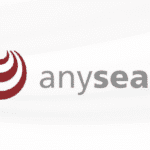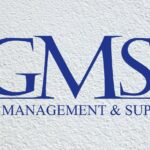On March 27, a majority of the Metropolitan Transit Authority board of directors voted in favor of New York City congestion pricing — a plan that will charge trucks $24 or $36 depending on their size — to enter the city’s Central Business District to the southern end of the Financial District for the vast majority of weekdays and 12 hours on weekends.
Overall, it could make last-mile delivery considerably more expensive for distributors serving customers in Manhattan.
Green-lighting the toll by a vote of 11 to 1 makes NYC the first city in the United States to approve congestion pricing. The board had already voted overwhelmingly in favor of the plan in December, while the latest vote was its final approval of clarifications and exemptions.
The initiative may go into effect following a 60-day public information campaign alongside a 30-day testing period. The MTA said that nearly all 110 toll readers are already installed, which could position the authority to begin collecting as early as June 15.
How Does it Work?

The MTA’s congestion pricing will levy a toll on any driver entering the city’s Central Business District stretching from 60th street in Manhattan and below to the southern tip of the Financial District. So, most drivers entering midtown Manhattan or below will have to pay the toll. For the toll initiative, the MTA calls this the “Congestion Relief Zone.”
The daytime ‘peak period’ toll will be in effect from 5 a.m. to 9 p.m. ET each weekday and 9 a.m. to 9 p.m. on weekends. The MTA board called for overnight hours rates (9 p.m. to 5 p.m. on weekdays and 9 p.m. to 9 a.m. on weekends) to be far less.
All drivers of cars, trucks, motorcycles and other vehicles — unless exempt — will be charged the toll, though in different amounts depending on the type of vehicle. Here’s how it breaks down:
- Passenger vehicles & small commercial vehicles (sedans, SUVs, pick-up trucks and small vans: $15 during peak period/$3.75 overnight. They will be charged only once per day, meaning a driver could enter the zone, leave it and return in the same day and be charged once.
- Small trucks and buses: $24 during peak period/$6 overnight
- Large trucks and buses: $36 during peak period/$9 overnight
- Motorcycles: $7.50 during peak period/$1.75 overnight
Taxis and ride app vehicles: Drivers will not be charged, but passengers will be charged a per-trip toll of $2.50 per trip if they enter the zone. For taxis, green cabs and black cars, the toll is $1.25 per trip.
Some vehicles — primarily government vehicles — will be exempt from the toll.
National news reports note that lawsuits against the congestion pricing plan are being heard in federal courts in both New York and New Jersey that could delay its implementation, though the MTA doesn’t expect that to happen.
Other notes
- Drivers who have less than $50,000 in annual income can apply for a discount
- Drivers who enter from the Lincoln, Holland, Battery and Queens-Midtown tunnels can receive a credit since they’re already paying a toll on those entrances
NYC’s official website states that the congestion pricing program will:
- Reduce traffic and travel time – with 100,000 fewer vehicles entering the zone daily. The MTA notes that 700,000 vehicles enter the zone every weekday.
- Lead to safer streets and cleaner air
- Reduce emissions
- Improve quality of life
Find much more detail about NYC’s congestion pricing and how it works at https://congestionreliefzone.mta.info/
Related Posts
-
anyseals' streamlined operations have resulted in more competitive pricing on large-volume orders.
-
DSG says it demonstrates confidence in its plan to drive profitable growth, generate long-term returns…
-
The addition of building materials distributor Kamco Supply expands GMS' wallboard distribution and geographic footprint.






